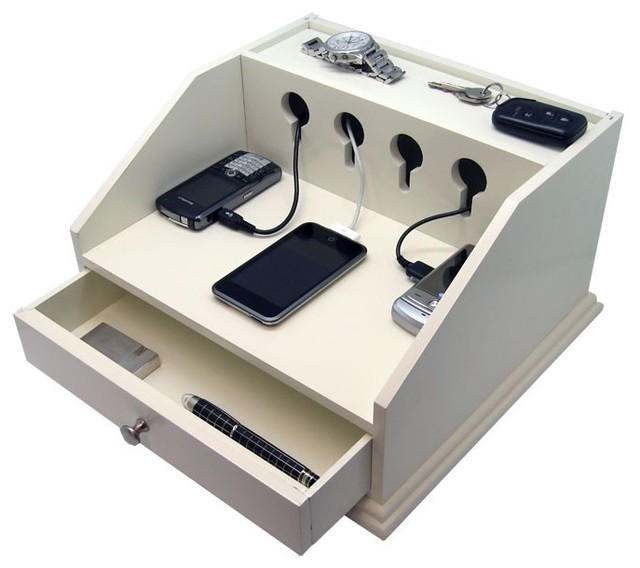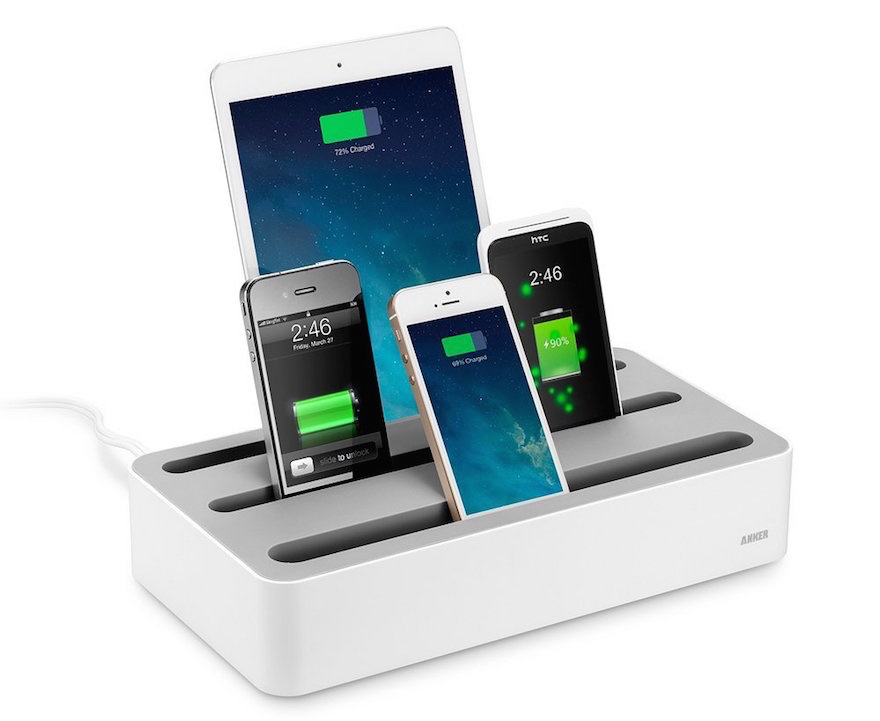Charging station
When a charging station for electric vehicles charging capability is called. These can be public or non- public, and in the simplest case a power outlet (230 V, 16 A ) at which the accumulator of an electrically driven vehicle can be charged via a cable connection ( Conductive charging system for electric vehicles, according to DIN EN61851 -1). There are paid and even many free charging stations. Meanwhile, there are increasingly charging stations with three-phase connection, so either multiple vehicles simultaneously or a vehicle can be loaded faster.
In a charging station as a solar filling station of the operator is also responsible for ensuring that the related electrical energy can be traced back to their origin directly to the sun, for example, using a solar power system.
Technology
Current micro - electric vehicles "fill up " usually at a charging station only small amounts of energy. Without sophisticated technology and with the simplest organizational measures, such as the flat-rate billing of the purchased energy costs in most power stations can be kept low. The currently most common systems are private outdoor outlets with AC or three-phase connections, Park & Charge or the phase current list. The plugs and cables meet the usual standards for electrical equipment IEC 60309/CEE.
The development of new plug-in systems is currently under discussion, without already a final standard would have been even adopted for the EU. Different power levels are generally for the charging stations are needed, a charge on conventional home network ( 230 V, 16 A), at special charging stations (eg 230/400 V, 32 A), as well as at public charging stations ( 400 V, 200 A, optionally provide direct current). After information is in Germany a system similar favors the blue 230 V 16 A CEE plug, but with two additional data and contacts for currents up to 32 A. This gives a maximum power output of 7.36 kW, ie in one hour 7.36 kWh can be transferred ( an energy corresponding to the heating value of 0.75 liters of diesel fuel ) to a car battery. Another plug based on the IEC 60309 standard is anchored in IEC 62196, has a total of seven contacts and a maximum cargo capacity of 43 kW. A designed under the auspices of the Sauerland connector manufacturer Mennekes and supported by several European automakers and energy companies charging plug has been presented in April 2009 and was standardized in November 2009 in the German standard VDE - AR-E 2623-2-2. This VDE standard plug for charging stations the vehicle or charger can be uniquely identified and for a connection of the vehicles and the vehicle battery into the power grid data communication can take place. The aim is to look at the vehicle battery as a part of the electricity grid. It can be charged at excess energy in the network ( energy sink ), and lack of energy in the network can be fed back from the battery energy to the grid ( "Vehicle to grid" ). However, these systems are still very new and will be tested in the coming years.
In the U.S., the standard has already been adopted under the designation SAE J1772. Its connector is included in IEC 62196-2 as type 1. The VDE standard plug was recorded as type 2 and uses the same SAE J1772 signaling.
In addition to the conductive charge ( ie power transmission over cable and connectors ), the energy can be transferred inductively. Such systems have existed for many years, including the charging system in the EV1 from General Motors was constructed. Even with buses it was already used, and various companies and research institutions showed such system at trade fairs and congresses ( for example different Electric Vehicle Symposium ). A system of Wamsler ( Austria ) for electric buses, the publications of Dassault became known in France ( also provided for buses) and lately the proposals made by Nissan for the charge of the planned electric cars.
With modern traction batteries a faster charge is sought. This is in the area of load times by one hour usually without problems, if the required services are available and the vehicles are equipped with the chargers. Conventional vehicles with 12 to 20 kWh capacity, need for at least a three-phase 16 amp (11 kW) or 32 A (22 kW). The so-called " three-phase system " with the "AC List" pursued as a standard to the 32 -A- box ( 22 kW). With even more resilient sockets corresponding high power charger could be in 10 to 20 minutes provide electrical energy for driving over 150 kilometers ( about 30 kWh). Such systems public do not yet exist, but are conceivable.
A quick-charge system through joint use of the existing DC network of trams in urban areas seems particularly forward here. This network normally has DC voltage in the order of 1 kV. There are numerous substations which supply the individual sections separately, so here public fast charging stations could be built at relatively low cost, because the power and rectifier infrastructure already exists.
Charging infrastructure in the private garage
Electric vehicles are mostly at home and now and then loaded at work. This accounts for over 90 % of all load operations. Only a small proportion of public charging stations.
Leading manufacturers of garages offer as optional equipment electrical installations. Unfortunately, there is virtually no standard packages for the charging of electric cars in prefabricated garages. Smaller electric vehicles such as electric bicycles, electric motorcycles and electric cars that have a small battery capacity and can be recharged by simple means (230 V, 16 A, and common household sockets). To charge an electric car with a larger capacity battery in the garage, however, have different requirements for the charging infrastructure.
Usual household outlets are limited for several hours of continuous operation at rated load and also not very mechanically reliable. Industrial sockets CEE ( Euro plug) have an increased mechanical strength and are protected against ingress of water.
To be prepared for the future, at least one power connector on the order of 22 kW (400 V 32 A) and three-phase industrial socket C is red recommended for batteries of electric cars in the private garage. An even stronger and faster charging is possible with suitable charger with 63A. When Renault ZOE traction battery can be charged as 30 minutes to 80%. These magnitudes can be scheduled at the house connection: While in western and northern Germany 63 A are common to the house connection, the house connection is made in southern Germany often only 35 A. In new residential areas are usually adequate capacity available without any problems. During the construction of a detached house you can for example leave the apartment connect with 35 A and 63 A with the garage. The manufacturers of electric cars and third party vendors offer it to wall boxes that ensure easy charging port.
Whether and how a quick- charge effect on the life of batteries depends on the used type of battery, the battery size and the charging current. New models of lithium - ion batteries can be described as fast - charge capability. In this case, a charge is meant by charging services> 1C, resulting in load times of less than an hour. For modern battery systems manufacturer is usually a normal charge current of 0.5C to 1C specified ( a 100 Ah cell can be loaded normally with currents of 50 A-100 A). The cells of Winston Battery for example as can be charged normal in about 2 hours if power supply and battery charger provide the necessary power available without sacrificing life.
In the context of solar cell and electric car races there were times in the Tour de Sol conflicting philosophies between slower, gentler and gentler charge against the fast charge at the time used battery types ( lead-acid batteries, nickel - cadmium batteries ). Even when the lithium - ion secondary battery, the price of a reduction of the charging time of the Normallladung addition, a loss of capacity and service life.
Even with advancements such as the lithium iron phosphate battery takes place (low ) self-discharge. A self-discharging when electric cars can be compensated by a relatively small area of photovoltaic modules on the roof. The vehicle should then be parked in the sun during the day and at night in the garage.
The positioning of the socket must be provided before the hood of electric cars and not to the side, where there is usually the gas cap in internal combustion cars.
A separate fuse and a separate residual current circuit breaker is to be used ( FI) per electric vehicle. Such devices are to be used today as a combination circuit breaker.
Regional Deployment
In Germany there are relatively dense charging station networks in the region Neckar -Alb, in the Erlangen -Nuremberg, in northern Hesse and in certain areas of the Ruhr area. Many are free. In Germany the 12,156 pure battery-powered electric vehicles are (as of January 1, 2014 ) approximately 4,400 charging stations over (as of October 28, 2013 ). LEMnet lists for Switzerland and Austria 717 357 publicly accessible charging stations on ( Release 27 October 2011). There are also for Austria has its own list, which lists 2109 charging options. Current information can be found at the website listed below. As of 1 March 2014, the Federal Association of Energy and Water Industries ( BDEW ) awards on request unique identification numbers for operators provided to the public charging stations in Germany, whereby the development of a functioning roaming system is made possible in the field of electric mobility.
For the approximately 60 electric buses in Beijing a battery exchange station was during the 2008 Olympics operated in the buses removed the dead battery and charged were pushed back. This station had a power supply of more than 100 kW. In China, is currently the construction of 3,000 electric buses for public passenger transport planned. It is expected that similar or more advanced charging stations come with AC System.
For now nearly 100 million electric bicycles, which should be in operation in China ( 2009), have simple outdoor outlets from as charging stations. In addition, the battery can be removed and charged on sockets indoors, or there is a cable pulled out. This is the simplest form of " power station for electric vehicles ."
Systems
Since 1992, offers Park & Charge of charging facilities for electric vehicles in reserved parking spaces. Since 1997 there is the Park & Charge system with the same key also in Germany. There are 143 locations in operation in Germany (as of September 12, 2011 ) ( in Switzerland: 235, in Austria 69). In addition to Park & Charge charging stations, there are a large number of free outdoor sockets for electric vehicles and various other systems, see below for the links. Through the efforts, increasingly introduce electric cars, more systems are planned and operated worldwide. Economically failed is the concept of "better place" in Israel, Portugal, Denmark and other countries to establish battery changing systems.
In Germany arise in the electric car model regions in many places charging stations, including in cooperation with BMW, RWE, EON, Daimler, VW and APCOA ( parking garages ). Especially Munich and Berlin to get a large number of electric charging stations for fleet tests with the BMW Mini E. Since June 2008, two power stations in Switzerland are also right on the highway in operation. The charging stations have been realized in cooperation of TexxEnergy and the EWA. They feature 230 - and 400 - volt outlets and allow the charging of electric vehicles with ecologically produced electricity. The stations are located just off the A2 motorway on the Gotthardraststätte (both in direction north and south) in Altdorf. More charging stations for the entire national road network of Switzerland are planned.
Significantly higher acceptance could achieve the electrical mobility, when a nationwide network of direct current stations would be established with quick-charge function. Thus, the often debated Range issues would be unnecessary.
Battery swapping
As a battery swapping charging stations are referred to which is not the batteries are charged with electricity, but are exchanged for already loaded Battierien. Thus, it does not matter how long the charge takes and, if sufficient network of stations, long rides are unlimited possible. The best-known provider of such solutions are Better Place and Tesla Motors.










